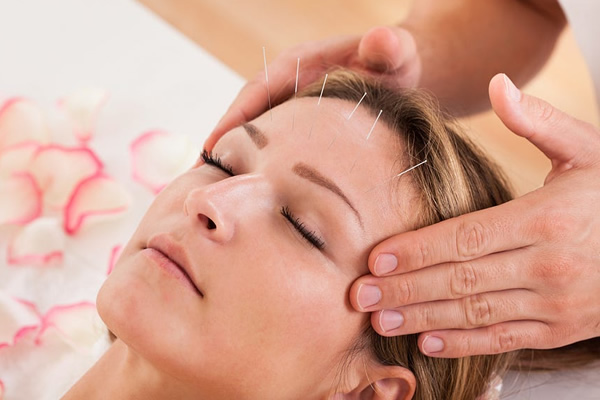
In a world increasingly dominated by conventional medicine, the allure of complementary therapies for optimal well-being is stronger than ever. These holistic approaches offer more than just symptom relief; they embrace the mind, body, and spirit connection. This article delves into the realm of complementary therapies, exploring their diverse forms and discussing their potential benefits in achieving and maintaining optimal well-being.
The Universe of Complementary Therapies
Defining Complementary Therapies:
The realm of complementary therapies is both vast and intriguing. These are healing practices and approaches that work in conjunction with, rather than in opposition to, conventional medicine. The core idea behind them is to provide a holistic and balanced approach to health and well-being. They can encompass a wide range of modalities, from traditional systems of medicine to more contemporary holistic practices.
Distinct from Conventional Medicine:
Complementary therapies differ significantly from conventional medicine. While the latter typically focuses on treating specific symptoms or diseases, complementary therapies aim to address the person as a whole. They recognize the interconnectedness of the mind, body, and spirit, seeking to restore balance and harmony.
Types and Modalities:
The world of complementary therapies is incredibly diverse. It encompasses a multitude of types and modalities, each with its own unique philosophy and techniques. From ancient practices like Ayurveda and Traditional Chinese Medicine to contemporary approaches like chiropractic care and energy healing, there’s a complementary therapy for virtually every aspect of well-being.
The Mind-Body Connection

Holistic Health:
At the heart of complementary therapies lies the concept of holistic health. This means treating the person as an integrated whole, where physical, mental, and emotional aspects are interconnected. This approach recognizes that addressing imbalances in one area can have profound effects on other aspects of well-being.
Psychoneuroimmunology:
Psychoneuroimmunology, often shortened to PNI, is a fascinating field that explores the relationship between our mental and emotional states, our nervous system, and our immune system. Complementary therapies often tap into the principles of PNI, recognizing that our mental and emotional states can significantly impact our physical health.
Stress Reduction and Mental Health:
Complementary therapies offer effective tools for stress reduction and mental health support. Practices like meditation and mindfulness can help manage stress, anxiety, and even depression. By addressing the mind-body connection, these therapies can be a powerful complement to traditional mental health treatments.
Traditional Healing Systems

Ayurveda:
Ayurveda, an ancient Indian system of medicine, is based on the concept of balance and harmony. It categorizes individuals into unique constitutional types, or “doshas,” and offers personalized recommendations for diet, lifestyle, and therapies to maintain or restore balance. It’s a holistic approach that goes beyond physical health, encompassing mental and spiritual well-being.
Traditional Chinese Medicine (TCM):
TCM is rooted in the balance of yin and yang, as well as the flow of vital energy, or “qi.” It includes practices like acupuncture and herbal medicine, which aim to restore this balance and promote optimal health. TCM takes a holistic approach, considering both the physical and energetic aspects of health.
Indigenous Healing Practices:
Many indigenous cultures have developed their own holistic healing practices. These often involve a deep connection with nature and spirituality. They recognize the importance of living in harmony with the environment and the spiritual world to achieve well-being.
Bodywork Therapies

Massage Therapy:
Massage therapy is not just a luxury; it’s a therapeutic practice that promotes relaxation, improves circulation, and relieves muscle tension. Different modalities of massage, such as Swedish, deep tissue, and hot stone, offer various benefits, from pain relief to stress reduction.
Chiropractic Care:
Chiropractic care focuses on the alignment of the spine and nervous system. Proper alignment can have a profound impact on overall health, improving everything from posture to pain management. It’s a holistic approach that recognizes the spine as a gateway to well-being.
Osteopathy:
Osteopathy is another bodywork therapy that takes a holistic view of health. It emphasizes the interrelationship between the body’s structure and function. Osteopaths use techniques like stretching and gentle pressure to restore balance and improve the body’s self-healing mechanisms.
Energy-Based Therapies
Reiki:
Reiki is a form of energy healing that channels the universal life force energy to promote healing and balance. It’s a non-invasive therapy that can be profoundly relaxing and may help alleviate physical and emotional imbalances.
Acupuncture:
Acupuncture, an integral part of TCM, involves the insertion of fine needles into specific points on the body. This stimulates the flow of qi and helps to restore balance within the body. Acupuncture can address a wide range of issues, from pain management to stress reduction.
Crystal Healing:
Crystal healing involves the use of gemstones and crystals to promote physical, emotional, and spiritual healing. Each crystal is believed to have its unique properties and energies. The practitioner places crystals on or around the body to restore balance and well-being.
Mind-Body Practices
Yoga:
Yoga is a holistic practice that unites body, mind, and spirit. It involves physical postures, breath control, and meditation. The benefits of yoga are extensive, including increased flexibility, reduced stress, and enhanced mental clarity.
Meditation:
Meditation is a practice that involves focusing the mind to achieve a mentally clear and emotionally calm state. It’s a powerful tool for reducing stress, anxiety, and improving overall mental well-being. Meditation can be tailored to individual preferences, making it accessible to almost anyone.
Tai Chi:
Tai Chi is a slow, graceful form of exercise that’s also a martial art. It’s designed to promote the flow of vital energy, or qi, through the body. Practicing Tai Chi can improve balance, reduce stress, and enhance overall physical well-being.
Herbal and Nutritional Therapies
Herbalism:
Herbalism, also known as phytotherapy, involves the use of plants and plant extracts for therapeutic purposes. Herbs can be used in various forms, including teas, tinctures, and supplements, to address a wide range of health issues.
Nutritional Supplements:
Nutritional supplements can fill gaps in your diet and support overall well-being. From vitamins and minerals to specialized supplements like probiotics, they can be a valuable addition to a holistic health regimen.
Aromatherapy:
Aromatherapy utilizes the scents and therapeutic properties of essential oils to enhance physical and emotional well-being. Essential oils can be diffused, applied topically, or used in baths to promote relaxation, energy, or mental clarity.
Alternative Medicine in Modern Healthcare
Integrative Medicine:
Integrative medicine seeks to bridge the gap between conventional and complementary approaches. It recognizes the value of both and aims to provide the best of both worlds to patients. Integrative medical practitioners often work together with complementary therapists to provide a well-rounded approach to health.
Hospitals and Holistic Care:
Many hospitals now offer holistic care options to their patients. This includes services like massage therapy, acupuncture, and integrative wellness programs. It’s a clear acknowledgment of the benefits complementary therapies can offer within a medical setting.
Research and Evidence:
The effectiveness of complementary therapies is increasingly supported by scientific research. Studies are revealing the benefits of these practices in treating a wide range of conditions, from chronic pain to mental health issues.
Personalized Treatment Plans
Consulting a Holistic Practitioner:
To truly harness the benefits of complementary therapies, it’s often best to consult with a holistic practitioner. These professionals can assess your individual needs and create a personalized treatment plan that combines various modalities to address your specific well-being goals.
Balancing Multiple Modalities:
Holistic health is about balance, and that includes finding the right balance of complementary therapies. Your treatment plan may include a combination of approaches, such as acupuncture, herbal remedies, and mindfulness practices, to address your unique health needs.
The Importance of Self-Care:
In the realm of complementary therapies, self-care is paramount. It’s about taking an active role in your well-being journey. This involves not only receiving treatments but also making choices that support your health, such as eating well, exercising, and managing stress.
The Art of Mindfulness
Mindful Living:
Mindfulness is a key component of many complementary therapies. It involves being fully present in the moment, which can reduce stress and enhance well-being. It can be incorporated into daily life through practices like mindful breathing and being fully engaged in daily activities.
Mindful Eating:
Mindful eating involves paying close attention to the sensory experience of eating, from the taste and texture of food to the thoughts and emotions that arise during meals. It can lead to healthier eating habits and a more enjoyable relationship with food.
Mindful Movement:
Practices like yoga and Tai Chi incorporate mindfulness into physical movement. This approach encourages you to be fully present in your body, which can enhance the physical and mental benefits of these activities.
Potential Risks and Considerations
Safety First:
While many complementary therapies are safe and effective, it’s essential to be aware of potential risks. Some therapies may not be suitable for certain individuals or medical conditions. Always consult with a qualified practitioner and disclose any medical issues or medications you are taking.
Consulting a Healthcare Professional:
The most effective approach often involves a collaboration between complementary therapy practitioners and medical professionals. It’s crucial to discuss your interest in complementary therapies with your primary healthcare provider, as they can provide guidance and monitor your progress.
Regulation and Licensing:
The regulation of complementary therapy practitioners can vary widely. Ensure that you seek out qualified and licensed practitioners who adhere to ethical standards and safety protocols. Many professional organizations exist to help you find reputable practitioners.
Embracing Holistic Living
Beyond Treatment:
Complementary therapies are not just about treating illnesses; they’re about maintaining well-being. By adopting these therapies, you’re making a commitment to holistic living that extends beyond symptom management.
Cultivating Resilience:
Holistic living can build physical and mental resilience. By embracing complementary therapies, you’re better equipped to handle life’s challenges, bounce back from setbacks, and maintain your well-being over the long term.
Community and Support:
Many individuals on the path to well-being find support and camaraderie within the complementary therapy community. Whether it’s a yoga class or a support group for those exploring alternative medicine, finding like-minded individuals can enhance your well-being journey.
Conclusion
Complementary therapies offer a tapestry of healing approaches that go beyond traditional medicine. By nurturing the mind-body connection and embracing the wisdom of ancient healing systems, these therapies have the potential to enhance your well-being in ways you may have never imagined.






